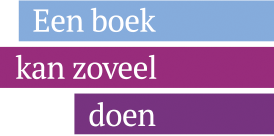Lezersrecensie
Buddha for children
Did you know this is the first ever picture book by an Indian author to be endorsed by His Holiness The Dalai Lama, who wrote the book’s foreword?
Since a few months now I'm reading around the world, which means I try to read at least (but hopefully many more than) one book from every country in the world.
Isn't it weird that I never read a book from India, such a big country?
At a certain moment there were several Indian children's books on Netgalley and I decided those would be a nice starting point to discover this country through children's eyes.
What an unexpected surprise!
All the Indian children's picture books I've read so far are very colourful and vibrant.
A real feast for the eyes!
And this book is no exception to that rule.
To get a sneak peak of some of the drawings you can head over to the publisher's website and click on the small pictures under the cover here.
The luminosity, the layout, the colours, … were all very well done.
Illustrator Anusha Santosh is a former architect and currently she's a freelancer while working part-time for a drawing app company.
Although most of her work is in the field of children’s book illustration, she also works on book covers, portraits, wedding cards and food illustrations.
Her portfolio is available here.
The story of this book was written by Priya Kumari who was born and raised in the scenic foothills of the Himalayan Mountains and who's now a multi-award-winning children’s author and the founder of independent publishing house Eternal Tree Books, which produces mainly children’s books.
Her mission is to publish uplifting books created by visionary authors and artists to share stories from under-represented Indian and Asian cultures.
In Leaf Talks Peace the storyteller is Harmony, a leaf on the Bodhi tree under which Buddha sat when he attained enlightenment.
The author presents the story as a poem, which is why all the phrases are very short.
But they're also very repetitive. After reading 35 times the word 'me' over the course of only 20 pages, I'm not so sure everyone will get the same message out of this book.
It's meant to promote solidarity, harmony, … between people and that's a very noble thing to learn to children.
Of course it's a matter of taste. But personally I'm not entirely convinced by the way it was done and that's why despite the beautiful illustrations my end rating is 3* for the whole.
*Thanks to NetGalley and Eternal Tree Books for providing a digital copy of this book in exchange for an honest review.
Since a few months now I'm reading around the world, which means I try to read at least (but hopefully many more than) one book from every country in the world.
Isn't it weird that I never read a book from India, such a big country?
At a certain moment there were several Indian children's books on Netgalley and I decided those would be a nice starting point to discover this country through children's eyes.
What an unexpected surprise!
All the Indian children's picture books I've read so far are very colourful and vibrant.
A real feast for the eyes!
And this book is no exception to that rule.
To get a sneak peak of some of the drawings you can head over to the publisher's website and click on the small pictures under the cover here.
The luminosity, the layout, the colours, … were all very well done.
Illustrator Anusha Santosh is a former architect and currently she's a freelancer while working part-time for a drawing app company.
Although most of her work is in the field of children’s book illustration, she also works on book covers, portraits, wedding cards and food illustrations.
Her portfolio is available here.
The story of this book was written by Priya Kumari who was born and raised in the scenic foothills of the Himalayan Mountains and who's now a multi-award-winning children’s author and the founder of independent publishing house Eternal Tree Books, which produces mainly children’s books.
Her mission is to publish uplifting books created by visionary authors and artists to share stories from under-represented Indian and Asian cultures.
In Leaf Talks Peace the storyteller is Harmony, a leaf on the Bodhi tree under which Buddha sat when he attained enlightenment.
The author presents the story as a poem, which is why all the phrases are very short.
But they're also very repetitive. After reading 35 times the word 'me' over the course of only 20 pages, I'm not so sure everyone will get the same message out of this book.
It's meant to promote solidarity, harmony, … between people and that's a very noble thing to learn to children.
Of course it's a matter of taste. But personally I'm not entirely convinced by the way it was done and that's why despite the beautiful illustrations my end rating is 3* for the whole.
*Thanks to NetGalley and Eternal Tree Books for providing a digital copy of this book in exchange for an honest review.
1
Reageer op deze recensie
















